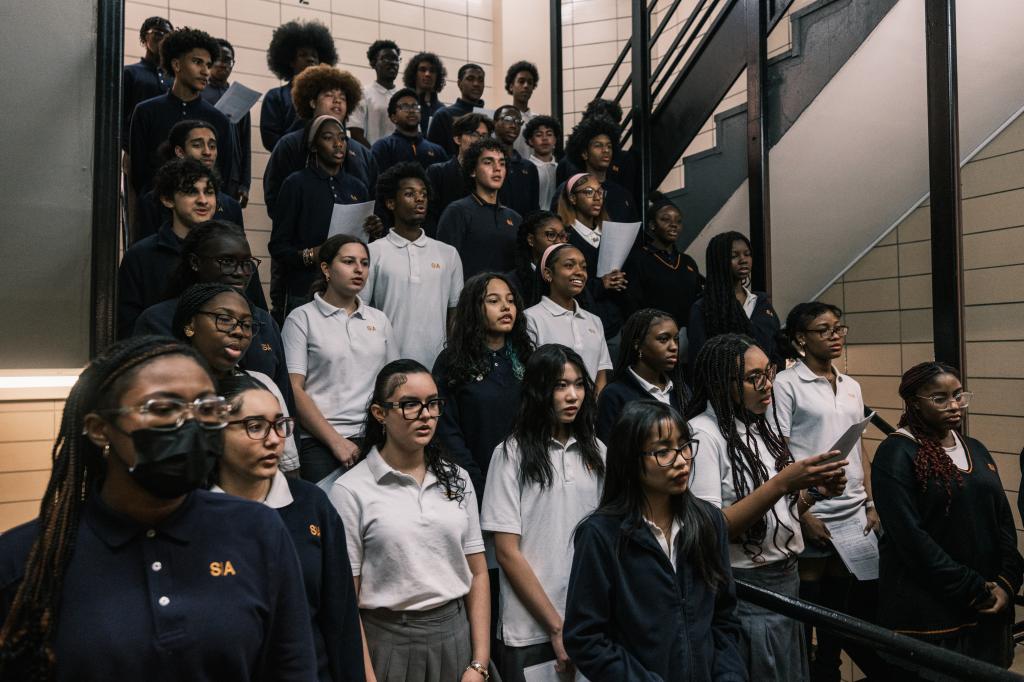The State of Co-Location in New York City Schools
For decades, New York City has embraced the practice of co-location, where multiple schools share the same building. This approach has allowed both district and charter schools to operate efficiently, particularly in a city where many school buildings are underutilized. Roughly two-thirds of the city’s schools—approximately 1,300 institutions—share facilities with at least one other school. This policy has enabled the growth of new schools, including many charter schools, which might otherwise struggle to find space in one of the most densely populated cities in the world. However, co-location has also brought to light significant inequities in how space is allocated between district and charter schools.
The Misallocation of Space in NYC Schools
Despite the abundance of unused space in NYC schools, charter schools consistently receive less space than their district counterparts. According to the city’s annual Enrollment, Capacity, and Utilization Report (known as the “Blue Book”), there are over 215,000 unused student seats across the city—equivalent to one-fifth of all available seats. This excess space could easily accommodate new schools without additional construction costs. Yet, charter schools are often forced to operate in overcrowded conditions, while district schools in the same buildings have far more space than they need. For example, in the Bronx, Success Academy Bronx 2 operates at 131% capacity, while its co-located district school uses only 67% of its allotted space. This disparity is not an isolated incident but a systemic issue across the city.
The Unfair Reality for Charter School Students
The unequal distribution of space has real-world consequences for students attending charter schools. At Success Academy High School of the Liberal Arts in Manhattan, choir students are forced to practice in stairwells due to the lack of available space. This is just one example of how charter schools are being shortchanged. Charter schools, which disproportionately serve low-income students and students of color, are often expected to make do with less space than district schools. In the same building where Success Academy Manhattan is located, the school has 27 students per classroom, compared to just 16 students per classroom for two co-located district high schools. This inequality sends a clear message: charter school students are being treated as if they deserve less than their district peers.
The Broader Impact of Space Inequity
The issue of space inequity is not limited to Success Academy or the Bronx. Across New York City, charter schools are consistently allocated less space than district schools, despite the fact that 82% of charter school students come from economically disadvantaged backgrounds. In Brooklyn, KIPP Amp Charter School operates at 125% capacity, while its co-located district school uses only 41% of its space. Similarly, in Queens and Manhattan, charter schools are forced to operate in overcrowded conditions while district schools in the same buildings have far more space than they need. This inequity is particularly troubling given that charter schools are often providing high-quality educational opportunities to students who might otherwise attend underperforming district schools.
The Politics of Co-Location
The fight over co-location has become increasingly contentious in recent years, with teachers’ unions and some city officials pushing to limit or eliminate the practice for charter schools. Despite the evidence that co-location can benefit both district and charter schools, politics continues to interfere with efforts to create a more equitable system. Academic studies have shown that district schools co-located with charter schools often see improvements in academic performance, student engagement, and school safety. Additionally, district schools receive matching funds for any facility upgrades made by charter schools, further benefiting from the arrangement. Yet, despite these benefits, the teachers’ union has fought tirelessly to restrict co-location, often through lawsuits and political pressure.
A Call to Action for Equitable Education
It is time for New York City to address the systemic inequities in how school space is allocated. While the “Blue Book” provides a detailed analysis of the city’s school capacity and utilization, it is not enough to simply assess the problem. The city must take concrete steps to ensure that all students, regardless of whether they attend a district or charter school, have access to equitable learning environments. This requires a commitment to fairness in space allocation and a willingness to challenge the political forces that have allowed this inequity to persist. By doing so, New York City can ensure that all students have the opportunity to succeed, regardless of the type of school they attend. As Eva Moskowitz, CEO of Success Academy, so rightly puts it, “It’s time to do something about this inequity and ensure all school students, district and charter, have equitable space to learn.” The future of New York City’s students depends on it.












